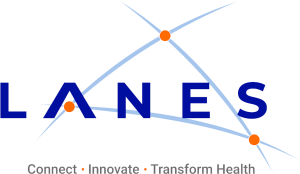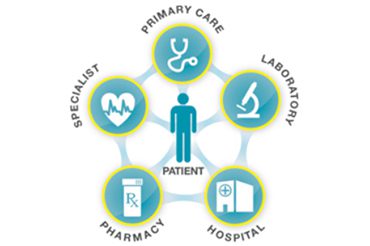The following article was published in the HIMSS Southern California Chapter Q4-2018 Newsletter.
By Vince Silvaer – Los Angeles Network for Enhanced Services
If rewritten today, the Hippocratic Oath would likely include the use of technology to its fullest extent, and as reasonably possible, to protect and serve the lives of patients. Community health information exchanges (HIEs) are quickly moving to the center of local health care ecosystems.
Communities are not merely defined by geography—they are shaped by common aims and pursuits that arise from sharing ideas, information, and other resources.
The term Health Information Exchange or HIE is now commonplace within health care settings and refers to an infrastructure built to support electronic transmission of health care-related data among medical facilities, and the
companies that oversee and govern the exchange of this data.
The primary tenet of an HIE is to enable clinical information to “follow the patient” while creating a foundational community of practice in which stakeholders can attain a higher degree of decision making while providing safe, timely, efficient, and effective patient-centered care. HIEs provide a technical capability that enables significant benefits for providers, patients, and hospitals, including:
- Better access to the right medical information, at the right time, for providers, patients, and other parties in the care continuum.
- Enhanced care coordination through communication between providers is of critical importance for patient care and leads to improved outcomes and patient safety. It can also reduce or eliminate redundant and unnecessary testing.
- Improved efficiency and reliability through the elimination of unnecessary paperwork and providing caregivers with clinical decision support tools.
- Improved quality of care and patient safety through the reduction of medication and medical errors and near misses.
As one might imagine, not all HIEs operate equally. What sets them apart are their capabilities, thought leadership, and functional vision.
Baseline Capabilities: The most valuable HIEs have seamless integration with many different electronic medical record (EMR) systems and act as a clinical data repository. This data warehouse stores patient medical records and performs as a pump sending and receiving standard health care records like physician notes, diagnoses, allergies, prescriptions ordered and filled, problem lists, and care plans. Typically, this information rolls up to commonly transmitted records like continuity of care documents (CCDs), admission, discharge and transfer (ADTs) and observation, result (ORUs) messages for lab results, EKG results, and imaging and pathology reports.
Equally important is a fundamental governance philosophy for the integration and management of behavioral health data to augment physical health records for holistic patient treatment and care.
The final piece of baseline capability is the use of encounter notifications and alerts combined with secure messaging -a catalyst for improving care coordination and data exchange. Event notifications can be sent to the PCP alerting them when their patient is hospitalized and community-wide messaging offers care managers an easier path to patient referrals and to coordinate follow-up appointments with the PCP and specialists.
Extended Capabilities: The maturity curve for an HIE is driven by thought leadership and having a strategic vision is paramount for growth and ongoing added value to the community. Some areas where leading HIEs look to expand:
- Integration of the emergency medical services (EMS) system with hospitals in the community
- Playing a role in social determinants of health and whole person care
- Acting as a gateway for integration with state disease and public health registries, the CURES database, the VA and Social Security Administration
- Providing population health, advanced analytics and reporting on quality measures for participants
- Acting as a public health beacon for syndromic surveillance
- Facilitating the exchange and sharing of medical images, advance directives, POLST, and EMS/out-of-hospital DNR forms in real-time at point-of-care
- Integration with urgent care centers, lab testing companies, skilled nursing, rehabilitation, and long-term care facilities, as well as home health companies in your community
- Providing a patient engagement portal to facilitate patient-centered care
- Offering workflow implementation consulting to ensure compatibility within existing workflows and practice operations
- Utilization of grant funding to cover the costs of community clinics joining the local HIE
Many of us recognize there isn’t one path forward on how we will achieve a secure, interoperable health system across the U.S., where care coordination and patient information exchange drives meaningful impact and results.
Community HIE’s role in providing for access to more robust real-time, small area data is undoubtedly a key component.
Do you need to connect to your community HIE? The answer is YES! You will achieve time and cost savings which may lead to increased capacity and more revenue by delivering supporting services to a larger number of patients, reduction in unnecessary duplicate testing, and more effective care coordination. Community HIEs provide hospitals, clinics and physicians access to otherwise unattainable emerging health information for better care delivery decisions and a healthier population.
For more information, contact the author Vince Silvaer at . Vince is with Los Angeles Network for Enhanced Services (LANES), a health information organization serving L.A. County. For more information, visit www.LanesLA.org.

